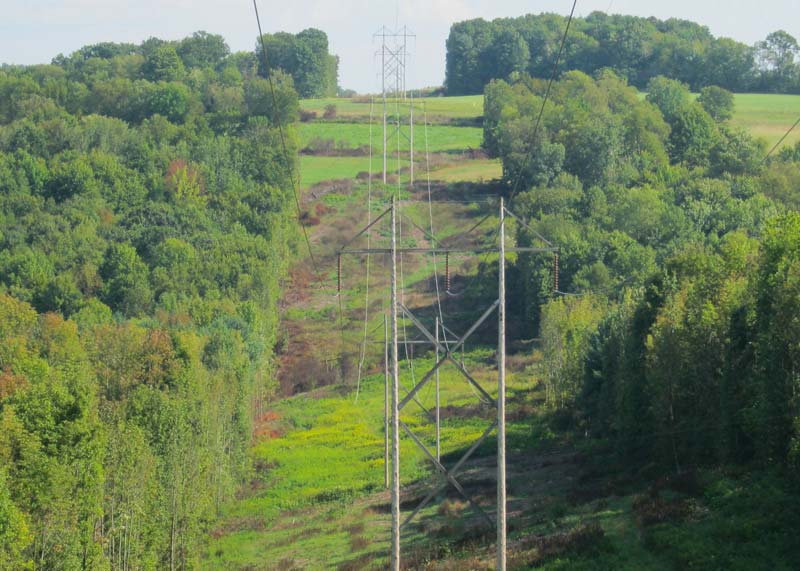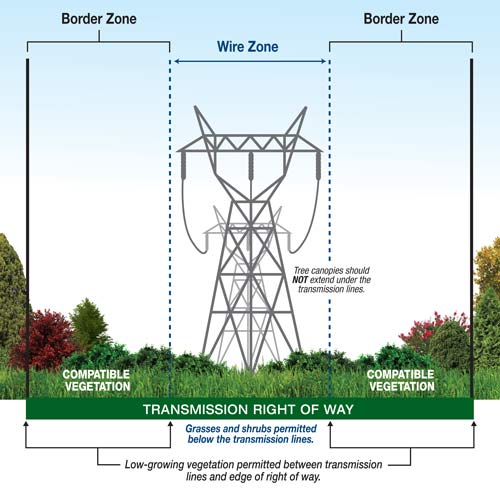Anatomy of a Right of Way
In simple terms, the right of way is the strip of land immediately below and adjacent to a transmission line.
The width of a right of way varies by the type of line—higher voltage lines typically have wider rights of way. Most rights of way on the TVA system are 75- to 200-feet wide, accommodating lines that can carry less than 26,000 volts up to 500,000 volts.
Easements
Under an easement, property owners have a responsibility not to put, allow, build or grow things in the right of way that could impede access to the lines or structures for maintenance or repairs, that might get close enough to the lines to short them out or that might present a safety hazard. This includes equipment and buildings and certain kinds of thick, woody or high-growing trees and shrubs.

Wire and Border Zones
To protect public safety and improve power reliability, TVA establishes two zones within a transmission right of way: wire zones and border zones.
In the wire zones directly under the lines, we allow only low-growing, non-woody plants. Wire zones are maintained by mowing and limited use of herbicides.
In the border zones between the edge of the right of way and the lines, with prior approval, we allow low-growing trees and shrubs, as shown in the following diagram.
See an extensive list of compatible vegetation for rights of way.
Compatible Vegetation for Transmission Rights of Way
